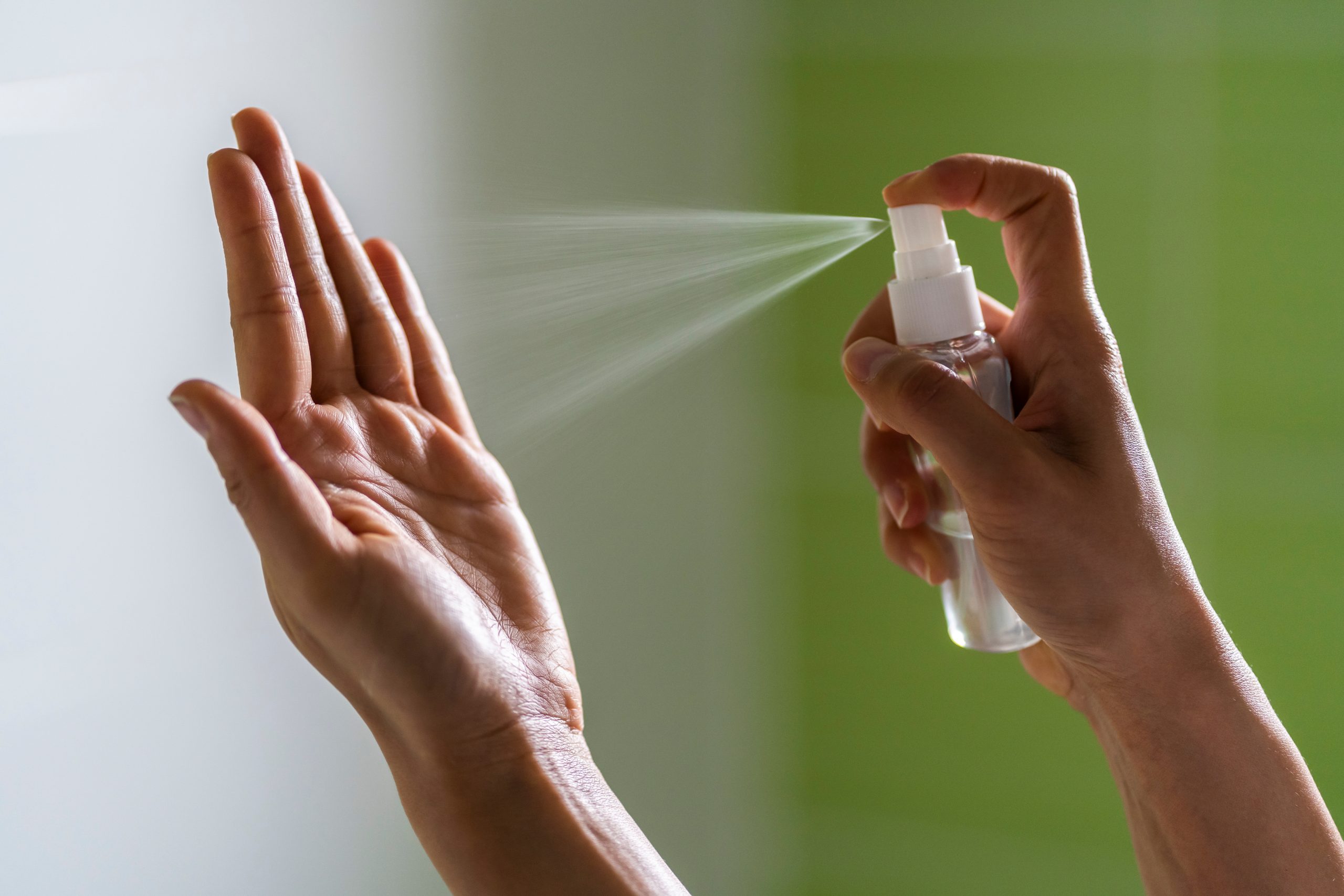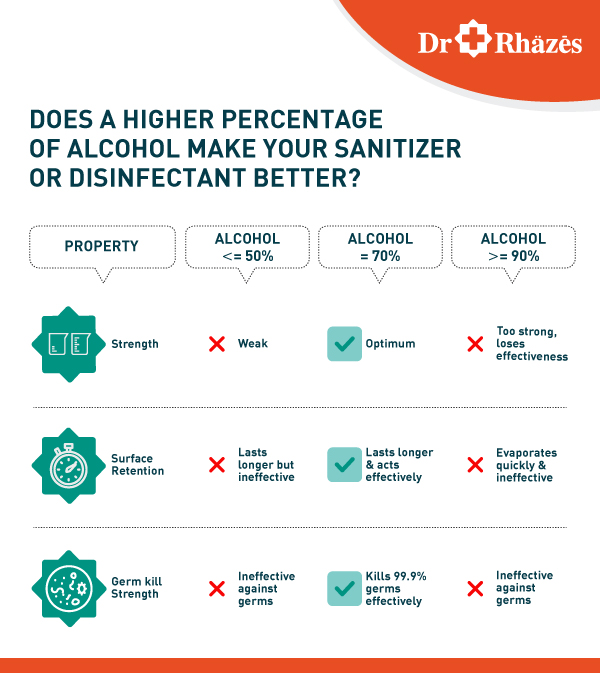
Does a higher percentage of alcohol make your disinfectant better?
More than 3000 years ago, the ancient Egyptians used palm wine to clean wounds and embalm bodies. As science progressed, the benefits of mixing alcohol with pure water to make it more effective as a disinfectant was discovered. But is there an optimum ratio of this mix?
Yes, there is an optimum mix of alcohol and water that you need to check labels for. If the alcohol content in your surface disinfectant dips below 50%, the effectiveness of the product too drops sharply. It may not destroy germs, merely making them dormant; or take longer to act. On the other hand, sanitizers and disinfectants with alcohol levels that go beyond 90-95% too tend to lose effectiveness.
Alcohol – ethanol being highly effective – acts by helping to break down the cell membrane of the bacteria, and binding with the protein within the cell, thereby effectively killing the bacteria. Pure water acts as a catalyst, making the process quicker and more efficient.
Research indicates that between disinfectants that contain 70% and 90% alcohol, the former would be a better choice. The high water content of the 70% alcohol sanitizer remains longer on the surface area, giving it relatively more time to act. Whereas, products with 90% or higher level of alcohol evaporate too quickly without allowing ample time for the germs to be destroyed. The high alcohol content is also likely to quickly burn up the cell walls of the germs, without actually being able to neutralise the core.
Sanitizers with an alcohol content close to 70% are more than 60% effective in deactivating germs, including the new COVID-19 virus. Dr. Rhazes Ultra Protect Gel with the precise 70% ethanol to water ratio kills up to 99.9% germs instantly in a single application and protects you for more than 2 hours.

So, while you should always use soap and water when available, sanitizers will protect you when on-the-go or when you are strapped for time.
